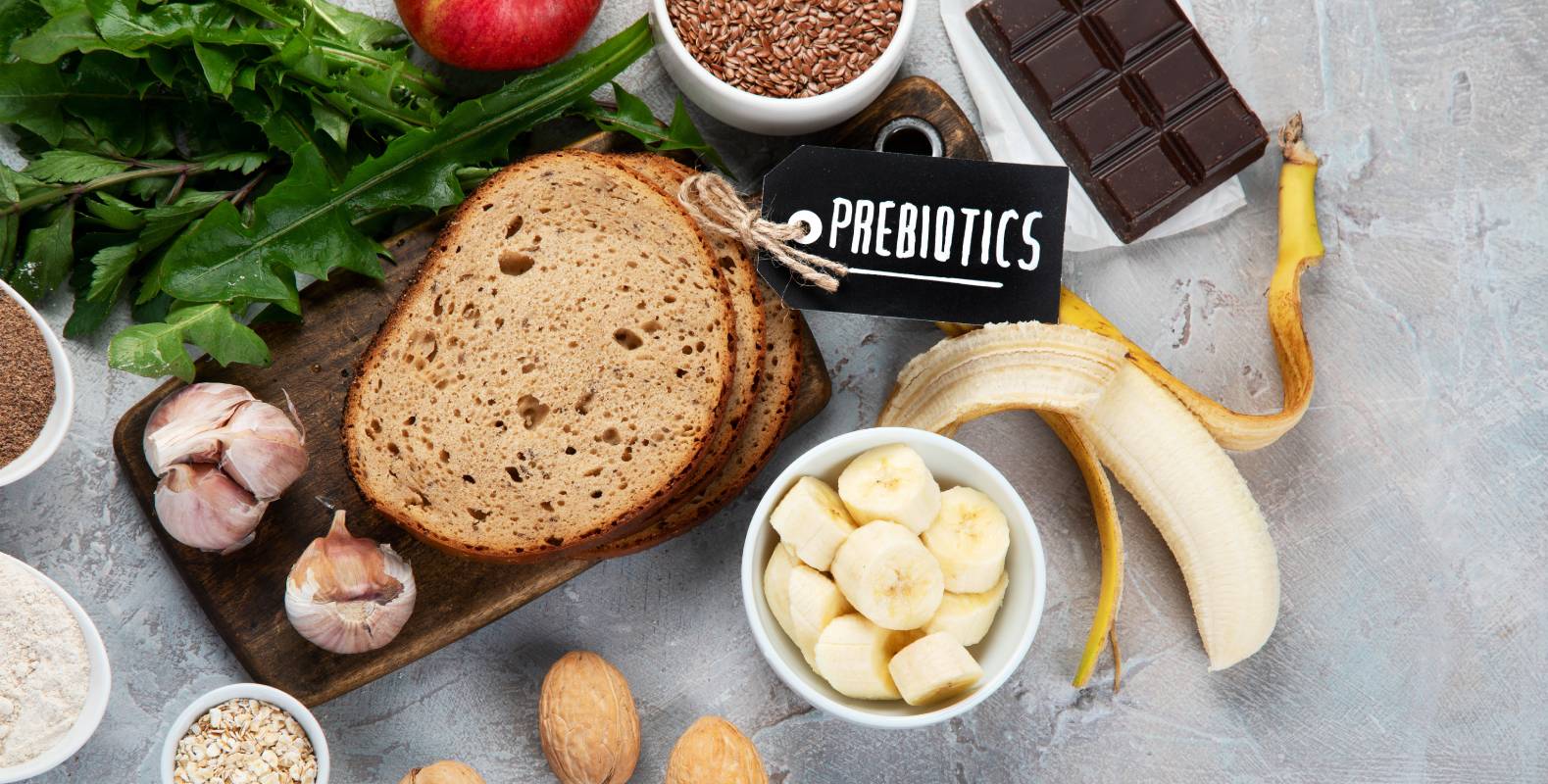Prebiotics are a relatively new concept in nutrition science. Prebiotics were first introduced and defined in 1995 as food components that are not digested by the one eating but by the microbes living in their gut (1). They can be thought of as food for probiotics (2). Although the study of prebiotics is still ongoing, this field has attracted significant attention due to our growing knowledge of the importance of a healthy gut microbiome (1,3,4). The benefits of prebiotics include increasing the production and absorption of vitamins and minerals, as well as indirectly leading to the benefits of probiotics by stimulating probiotic growth (1,5).
Using the original, strict definition of prebiotics, only one class of compounds fit the criteria: fructooligosaccharides (FOS), which are short- or medium-length carbohydrates and can be further divided into oligofructose or inulin. Garlic, onion, artichoke, and asparagus contain high levels of FOS (1). Studies show that FOS encourages the growth of bifidobacteria, a genus of gut inhabitants that is important for normal digestive health and is thought to help control the levels of pathogenic microbes in the gut (1,3,4,6). Bifidobacteria are often used as probiotics (1,3,4).
Specifically, bifidobacteria seem to compete with and even directly inhibit the growth of other types of gut microbes that can be harmful, including clostridia, E. coli, and salmonellas (1,3,6). In addition, they can stimulate immune defenses and facilitate the production, absorption, and/or digestion of various nutrients (1,3,6). Prebiotics thus also carry these benefits by supporting the growth of bifidobacteria in particular.
Furthermore, the fermentation of prebiotics by gut microorganisms produces short-chain fatty acids (SCFAs), which have antipathogenic effects, serve as metabolic fuel and modulators throughout the body, and are thought to improve the absorption of several minerals in the colon (1,3,6).
Over the years, there has been significant debate as to the most useful definition of prebiotics. The original definition specifies that the compound a) is not digestible (by the host), b) selectively stimulates the growth of gut bacteria, and c) thus improves health. Other researchers have proposed expanding prebiotics to include compounds that positively impact microbiomes across the body and not just in the gut, that are not necessarily fermented by gut microorganisms, or that change the composition of the gut microbiome (3). Under alternative definitions, t-galactooligosaccharides (tGOS), lactulose, and dietary fibers broadly may be considered prebiotics as well (3). All prebiotics and prebiotic candidates so far are carbohydrates (3,6).
Our understanding of prebiotics is evolving as additional research is performed. Depending on the exact definition used, prebiotics may be considered to have a narrower or broader range of benefits toward health, but in general, they support the normal, healthy functions of the gut microbiome. These include protection against pathogens and symbiotically assisting with nutrients and digestion. Currently established prebiotic compounds fall under the umbrella of dietary fibers, and further research may find that the broad benefits of dietary fibers – for example, lower risk of cardiovascular disease and diabetes – may be connected to prebiotics (6). Many fruits and vegetables contain prebiotics or candidate compounds, especially those that contain high levels of complex carbohydrates, and some supplements are also available (2,5).
References
- Gibson, G. R., & Roberfroid, M. B. (1995). Dietary modulation of the human colonic microbiota: introducing the concept of prebiotics. The Journal of Nutrition, 125(6), 1401-1412. doi: 10.1093/jn/125.6.1401
- Villines, Z. (2018). “What is the difference between prebiotics and probiotics?” Medical News Today. https://www.medicalnewstoday.com/articles/323490
- Bindels, L. B., Delzenne, N. M., Cani, P. D., & Walter, J. (2015). Towards a more comprehensive concept for prebiotics. Nature Reviews Gastroenterology & Hepatology, 12(5), 303–310. doi:10.1038/nrgastro.2015.47
- Roberfroid, M. (2007). Prebiotics: The Concept Revisited. The Journal of Nutrition, 137(3), 830S–837S
- Mayo Clinic Staff. (2021). “Prebiotics, probiotics and your health.” Mayo Clinic. https://www.mayoclinic.org/prebiotics-probiotics-and-your-health/art-20390058
- Slavin, J. (2013). Fiber and Prebiotics: Mechanisms and Health Benefits. Nutrients, 5(4), 1417-1435. doi:10.3390/nu5041417
